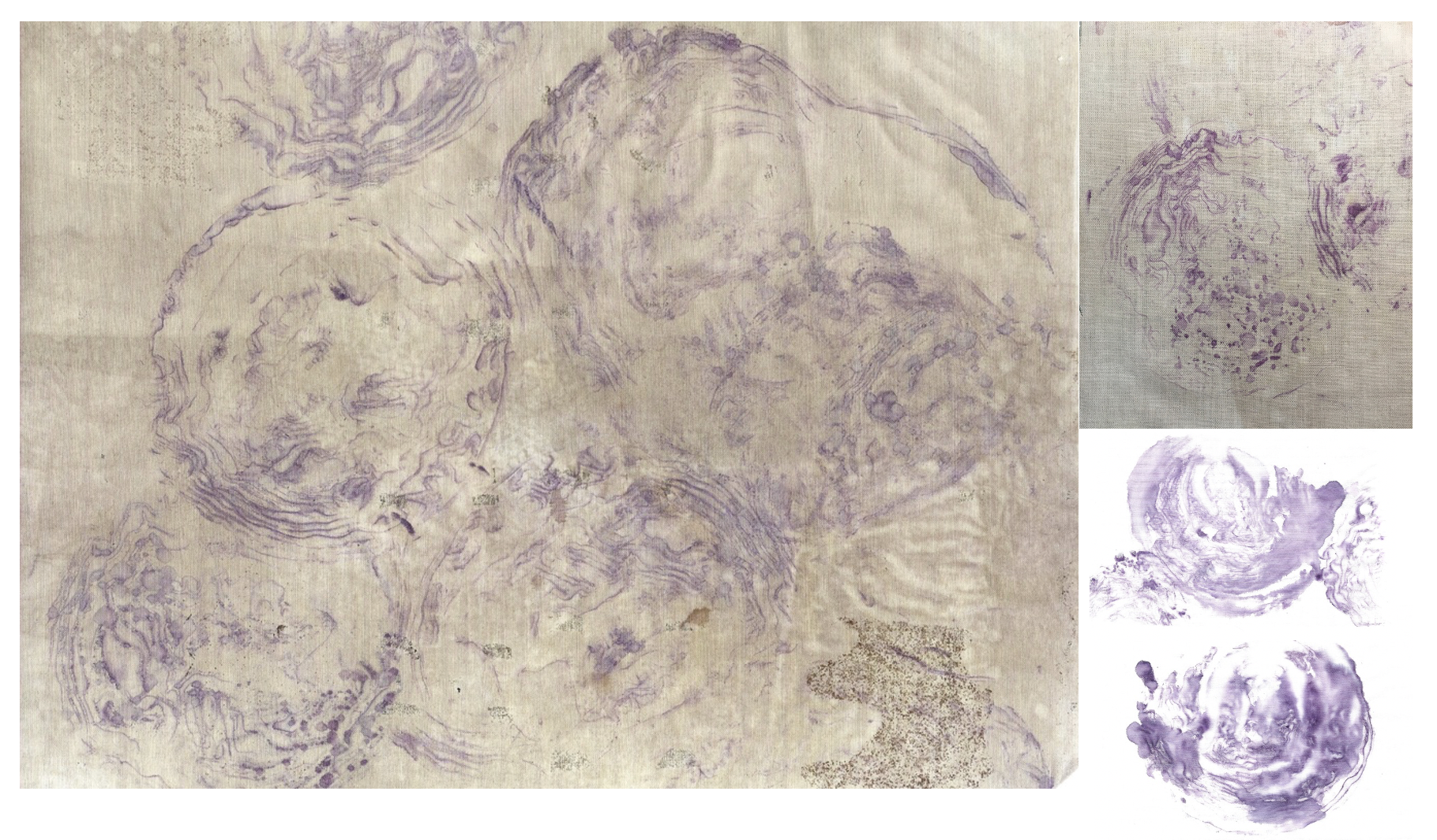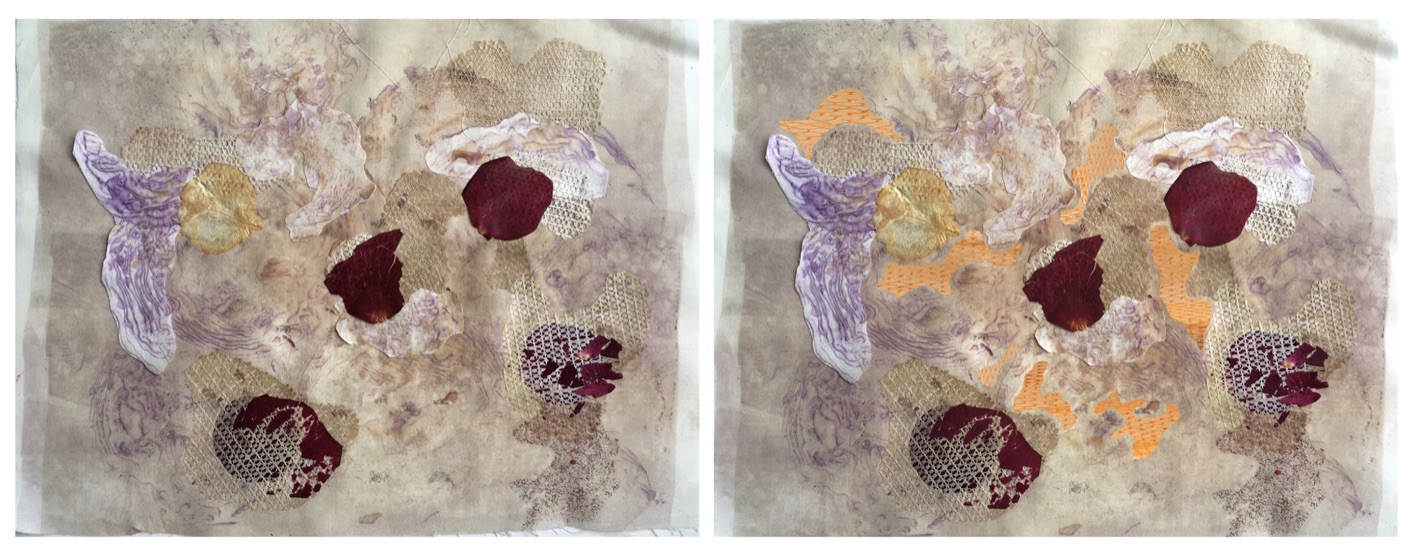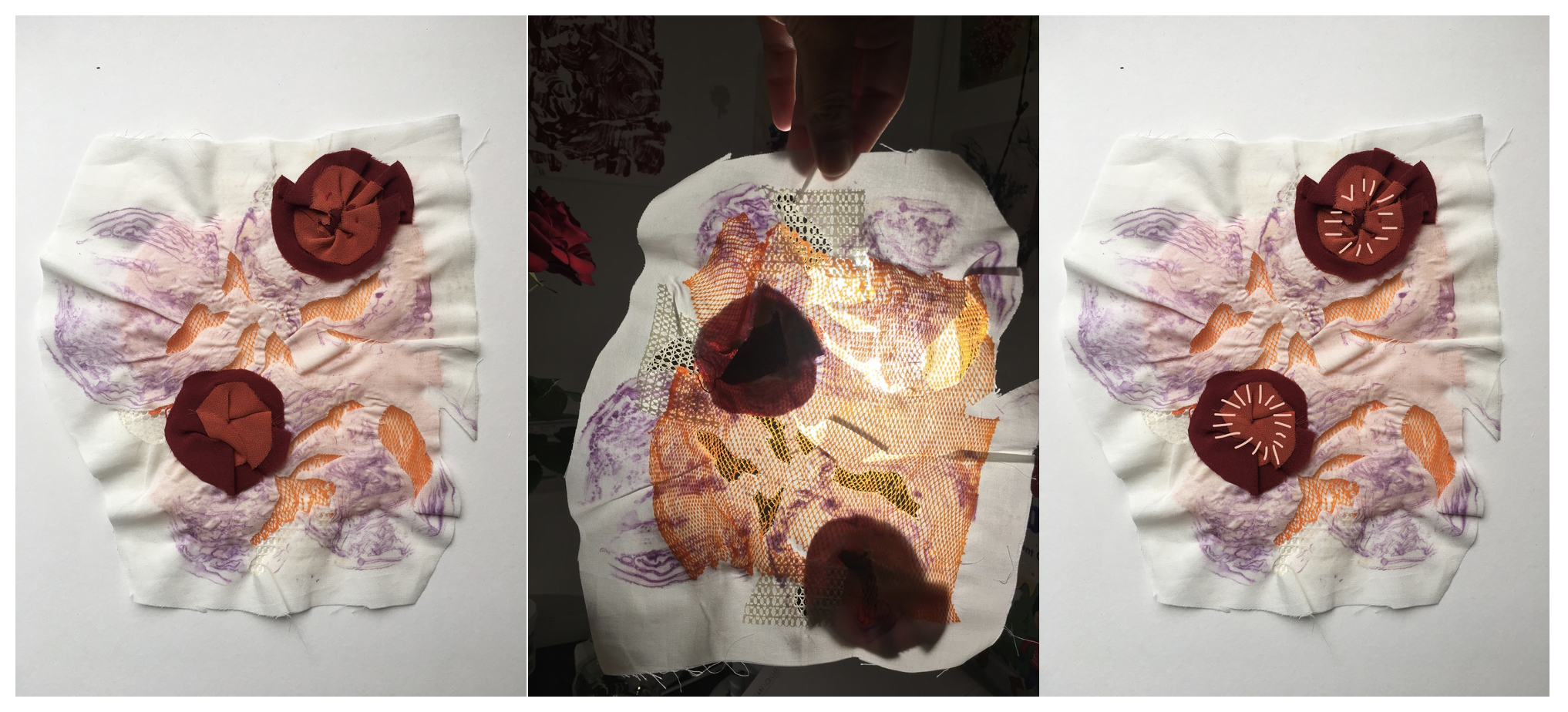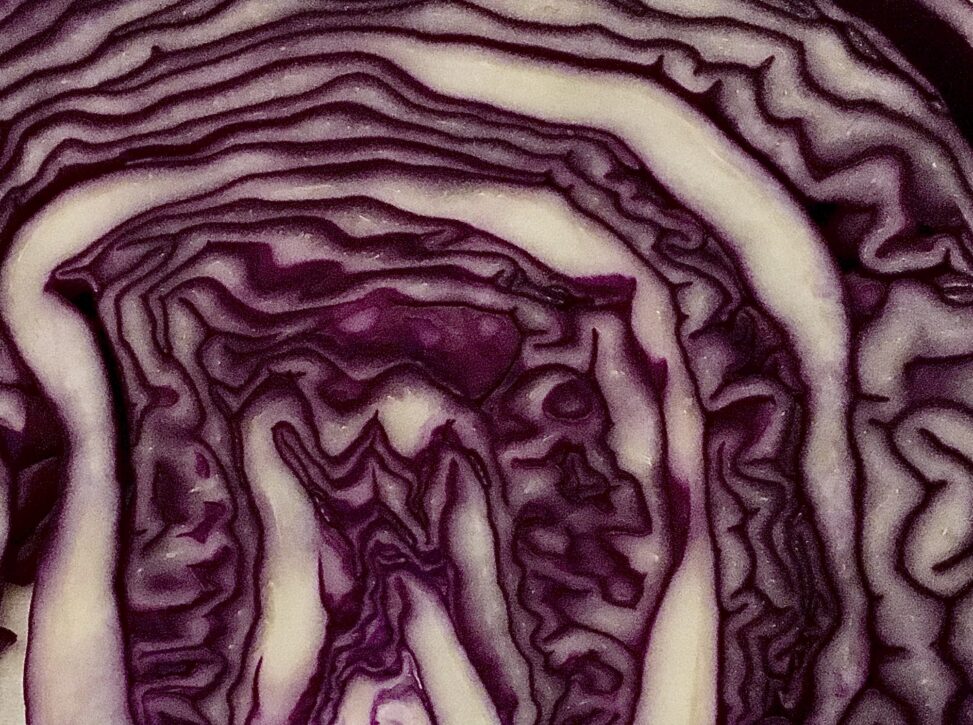
Image showing fabric manipulation
Referring back to my annotated sample from project 1, I explored ruffles and gathering as ways to manipulate circular cut fabric pieces to create 3-D organic structures. From my experience working with different fabrics in Project 1 I found polyester to be the most easily manipulative due to its light density, intolerance to high heat and it is a highly see through material as well. I used polyester fabric sourced from charity shops and left over materials from projects 1 and 2

Image showing red cabbage impression on cotton fabric
As a development from my Project 2 samples, I initially explored the use of red cabbage as a means of natural fabric dye and print. The cotton fabric used was leftover from project 2, already coloured using heat transfer paper. With using heat from an iron, the layers and details and colour in the cabbage slices were successfully transferred onto fabric. This became a prime material in my development samples and colour palette for project 3.

Image showing first development sample I wish to include on my board
I then collaged rose petals, rubber fabric and printed cotton fabric onto my sample. This sample focuses more on pattern and detail. When held in front of a light it appeared quite dull due to the lack of layering. On the right I have included a digital edit to explore the use of layering with onion mesh to create more open spaces for light to shine through and a more exciting composition.

Image showing sample exploring compositional layout and layering development
Using the digital edit of my first development sample, I attempted to create a more layered piece by fusing onion mesh packaging to the back of cotton fabric. It was interesting to see how heat made the mesh shrink, distorting and gathering the fabric. I incorporated polyester fabric flowers made using gathering and reverse appliqué e in place of real petals. On the right shows a digital edit of the sample exploring added detail using embroidery.



Leave a Reply